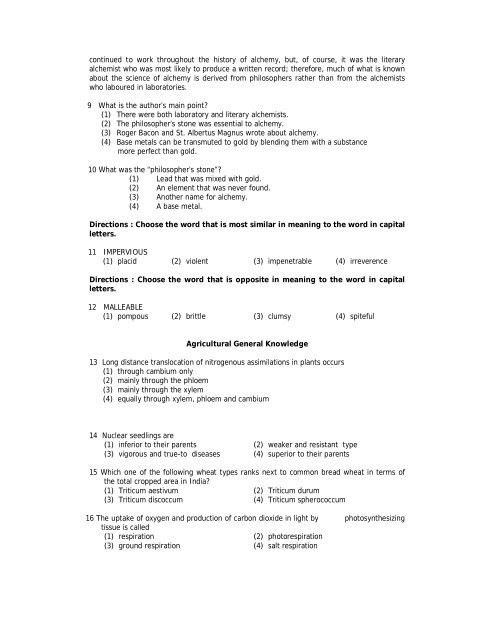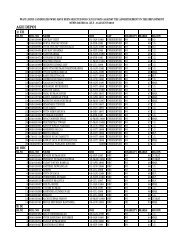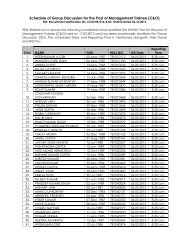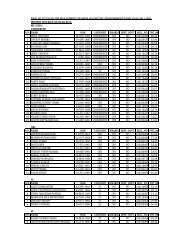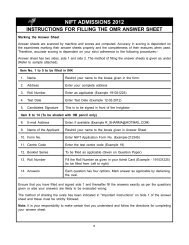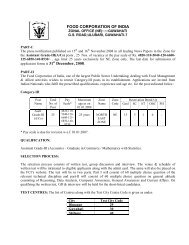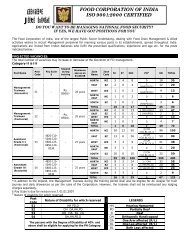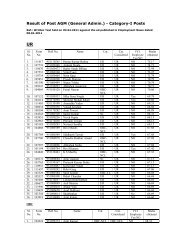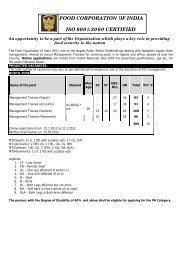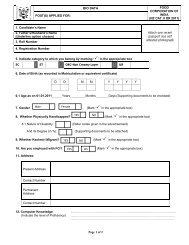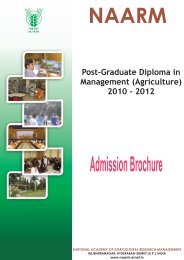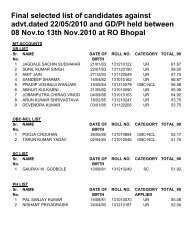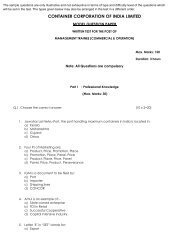SAMPLE QUESTIONS Note: These questions are ... - special test
SAMPLE QUESTIONS Note: These questions are ... - special test
SAMPLE QUESTIONS Note: These questions are ... - special test
Create successful ePaper yourself
Turn your PDF publications into a flip-book with our unique Google optimized e-Paper software.
continued to work throughout the history of alchemy, but, of course, it was the literaryalchemist who was most likely to produce a written record; therefore, much of what is knownabout the science of alchemy is derived from philosophers rather than from the alchemistswho laboured in laboratories.9 What is the author’s main point?(1) There were both laboratory and literary alchemists.(2) The philosopher’s stone was essential to alchemy.(3) Roger Bacon and St. Albertus Magnus wrote about alchemy.(4) Base metals can be transmuted to gold by blending them with a substancemore perfect than gold.10 What was the “philosopher’s stone”?(1) Lead that was mixed with gold.(2) An element that was never found.(3) Another name for alchemy.(4) A base metal.Directions : Choose the word that is most similar in meaning to the word in capitalletters.11 IMPERVIOUS(1) placid (2) violent (3) impenetrable (4) irreverenceDirections : Choose the word that is opposite in meaning to the word in capitalletters.12 MALLEABLE(1) pompous (2) brittle (3) clumsy (4) spitefulAgricultural General Knowledge13 Long distance translocation of nitrogenous assimilations in plants occurs(1) through cambium only(2) mainly through the phloem(3) mainly through the xylem(4) equally through xylem, phloem and cambium14 Nuclear seedlings <strong>are</strong>(1) inferior to their p<strong>are</strong>nts (2) weaker and resistant type(3) vigorous and true-to diseases (4) superior to their p<strong>are</strong>nts15 Which one of the following wheat types ranks next to common bread wheat in terms ofthe total cropped <strong>are</strong>a in India?(1) Triticum aestivum (2) Triticum durum(3) Triticum discoccum (4) Triticum spherococcum16 The uptake of oxygen and production of carbon dioxide in light by photosynthesizingtissue is called(1) respiration (2) photorespiration(3) ground respiration (4) salt respiration


